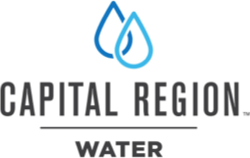Local Planning Areas
Capital Region Water’s Community Greening Plan focuses on identifying areas of opportunity for green stormwater infrastructure and assessing the feasibility of implementation within Harrisburg. While the primary purpose of green stormwater infrastructure is to manage stormwater, we cannot ignore its transformative nature. Not only are the region’s waterways poised to benefit from a green stormwater infrastructure master plan, but so are Harrisburg’s residents, businesses, and visitors. Green stormwater infrastructure can enhance placemaking, stimulate economic development, and lead to a more memorable and enjoyable public space.
The city and community participation in the planning process that created the Community Greening Plan—from residents to partner organizations to experts in design and infrastructure—was essential and will continue to be vital to its evolution. During community meetings, participants stressed the importance of improving streets, parks, vacant lots, schools, trees, and the river through community greening solutions. The opportunities to enhance these public and open spaces are detailed and prioritized throughout the plan.

Benefits to the Public
Improving water quality, attracting economic investments, reviving public space in distressed neighborhoods, providing new recreation opportunities, and encouraging redevelopment are just a few ways the public will benefit. These greening projects will begin to improve the overall sustainability of Harrisburg. Our top priority is working with the community to find opportunities to beautify and revitalize neighborhoods throughout Harrisburg.
Our Strategy
Using a computer model of our system, local planning areas, and various control technologies, Capital Region Water evaluated several potential strategies. Each strategy was first evaluated based on performance and cost to assess the balance between affordability, cost effectiveness, and water quality improvements. Other economic, social, and environmental factors were also considered to understand the broader impact of the program on the Harrisburg community.
While all of the strategies we looked at would benefit the environment by improving water quality, one stood out as the clear favorite by enhancing the economic and social health of the community.
The decentralized approach will result in the construction of green infrastructure projects throughout the city to prevent stormwater from entering the system—such as street trees, rain gardens, permeable roadways with storage, and green roofs.
The Cost of City Beautiful H2O
The cost to completely reduce combined sewer overflows in Harrisburg is estimated to cost more than what the community can afford. As part of its policy, the EPA allows Capital Region Water to consider what its community can afford and limit the total cost of the program. Based on Harrisburg’s socioeconomic conditions, EPA guidance allows Capital Region Water to limit the cost of its program and subsequent rates to 2% of median household income. But despite being considered affordable by federal standards, this will still result in utility bills that will far exceed 2% of income for some customers in Harrisburg.
If the disposable income for households is reduced further due to higher utility bills, this will increase financial burden, especially on those that are below the federal poverty level. This could negatively impact public health, as reducing disposable income for these households would further reduce their ability to pay for necessities such as food, heat, and medical care. Capital Region Water is committed to improving public health from all angles, and we are determined to mitigate the potential impact on vulnerable families and households in Harrisburg. Given these considerations and the potential hardship for many households within the service area, Capital Region Water is advocating for the maximum schedule relief possible for implementing this program to help mitigate affordability concerns.
Capital Region Water will fight to keep the total cost of City Beautiful H2O below $315 million over the next 20 years.
The Problem
Harrisburg, like cities across the country, is facing the challenge of maintaining and upgrading water and sewer infrastructure that was built decades ago.
The Program
Our plan for a cleaner, more beautiful city.
What’s Next
Over the next 20 years, Capital Region Water will be implementing many projects, both big and small.

